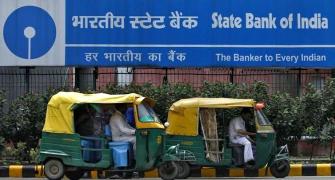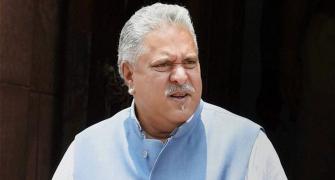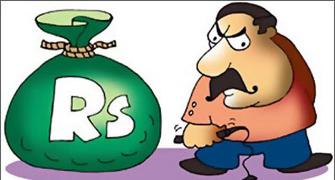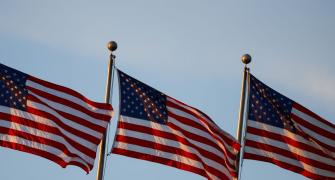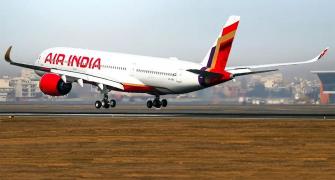 Lanco Infratech is missing from the list as it is yet to declare its consolidated results for FY16
Lanco Infratech is missing from the list as it is yet to declare its consolidated results for FY16
India’s top 10 business houses are the biggest borrowers from banks but it’s the next 10 -- ranked 11 to 20 -- which are giving a bigger headache to lenders, as many of these firms are running out of ammunition to service their debt.
In FY16, for the first time in a decade, the combined operating profit of the country’s top 11 to 20 borrowers fell short of their interest obligations, leading to potential loan default by some of them.
These firms reported a combined operating profit of Rs 26,077 crore (Rs 260.77 billion) in FY16, lower than their interest obligation of Rs 30,351 crore (Rs 303.51 billion).
Their operating profit was down 21 per cent in the past two years, against 58 per cent jump in interest obligations.
Some of the most indebted groups or companies in this category are Bhushan Steel, GVK, GMR, Videocon, DLF, Amtek Group, KSK Energy and IL&FS Transport.
Lanco Infratech is missing from the list as it is yet to declare its consolidated results for FY16.
The company had reported consolidated debt of Rs 39,191 crore (Rs 391.91 billion) in FY15 and interest coverage ratio of 0.6.
Earlier this week, Business Standard reported the indebtedness of India’s 10 biggest business groups in terms of debt outstanding at the end of March this year.
Interest coverage ratio of the top 11 to 20 companies was down to 0.9 in FY16, compared with 1.5 a year ago and a high of 9.2 in FY08.
ICR, measure of a firm’s loan servicing ability, is calculated by dividing operating profit by the interest obligations for the period.
Higher the ratio, greater is the firm’s debt servicing ability.
There has been a similar trend in the leverage ratio of these companies because of a combination of poor profitability and a steadily rising debt.
The combined debt to equity ratio (net of cash on books) of these companies zoomed to 2.7 in FY16 from 2.4 in FY15.
The analysis is based on the consolidated finances of corporate India’s biggest borrowers in terms of gross debt outstanding at the end of FY16.
The sample only includes listed non-banks and financial companies but excludes government-owned companies.
The figures for FY16 and FY15 are un-audited.
At the end of FY16, these companies were sitting on combined gross debt of nearly Rs 3 lakh crore, (Rs 3 trillion) up from Rs 2.34 lakh crore (Rs 2.34 trillion) three years ago.
During the same period, the sample net worth has been stagnant at around Rs 1 lakh crore (Rs 1 trillion), leading to a steady rise in their leverage ratio.
Capital goods and infrastructure major Larsen & Toubro tops the list with total gross debt of around Rs 47,000 crore (Rs 470 billion) in Fy16, excluding the numbers for its listed subsidiary L&T Finance.
It is followed by Bhushan Steel and Videocon group, respectively.
Alok Industries, with total debt of around Rs 20,000 crore (Rs 200 billion) at the end of FY16, looks more vulnerable, given its mounting losses and negative net worth.
Beside, lenders are on the hook for another Rs 2 lakh crore (Rs 2 trillion) worth debt tied-up in chronically loss-making companies.
A total of 302 non-financial companies reported negative net worth in FY16 because of continuous losses, up from 237 a year ago.
Together, these companies owe Rs 2.15 lakh crore (Rs 2.15 trillion) to lenders, including Alok Industries.
Some of the other large borrowers with negative net worth include Suzlon Energy, Jet Airways, REI Agro, GTL, Tata Tele (Maharashtra), ABG Shipyard and Shree Renuka Sugar.
Analysts say the banks may be forced take a haircut of their exposure to many of these firms, given a slim chance of a quick revival in their fortunes.
“Given the growing mismatch between many of these firms’ profitability and their interest burden, there is a slim chance of their revival.
"Banks may be forced to come as saviour and cut their interest burden by converting a part of their debt into equity, as permitted by the new RBI regulations,” says Dhananjay Sinha, co-head institutional equity, Emkay Global Financial Services.
The image is used for representational purpose only


